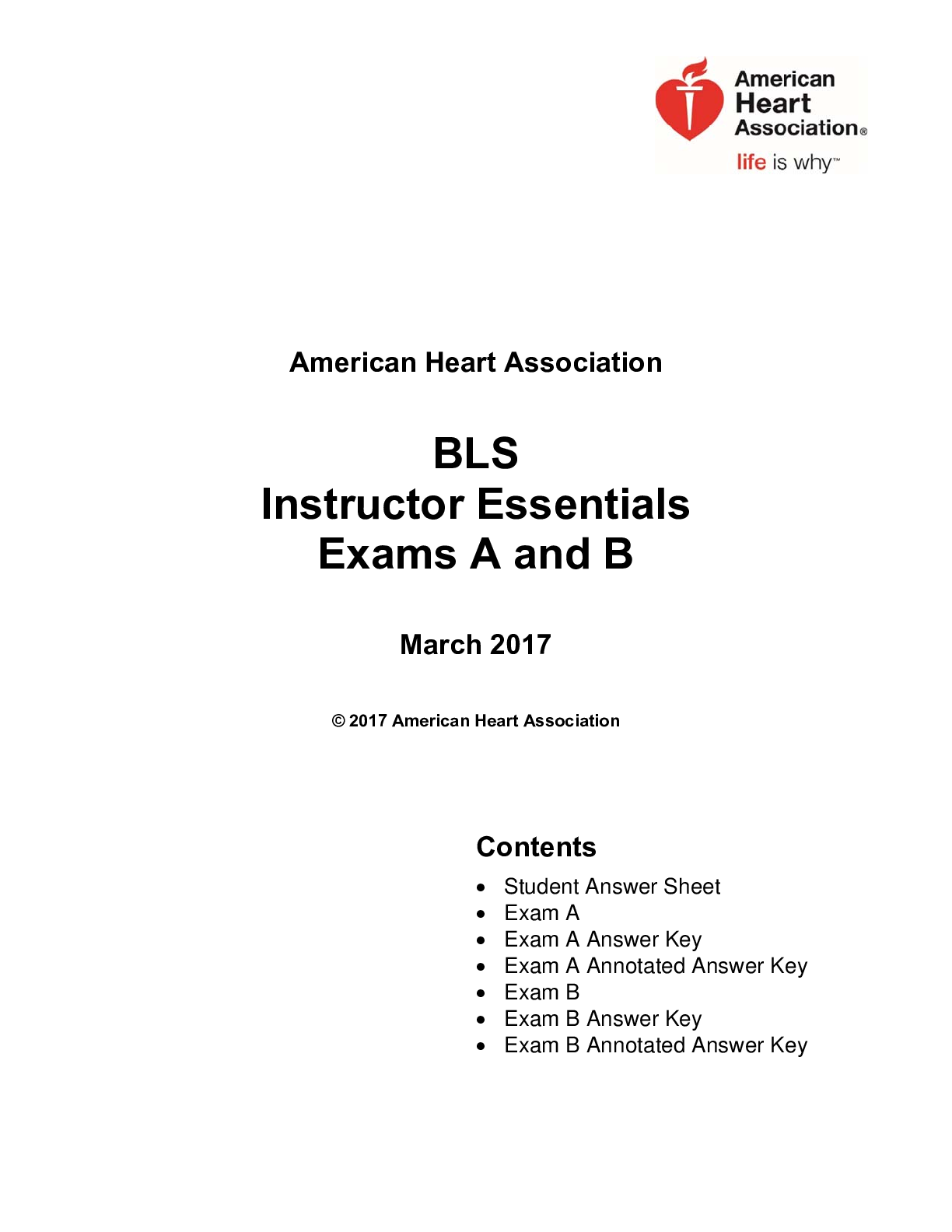BioChemistry > QUESTIONS & ANSWERS > WGU C785 Biochemistry Unit Exam Questions and Answers 100% Verified (All)
WGU C785 Biochemistry Unit Exam Questions and Answers 100% Verified
Document Content and Description Below
WGU C785 Biochemistry Unit Exam Questions and Answers 100% Verified A final product of a four-step metabolic pathway serves as a noncompetitive inhibitor, binding to an enzyme in this pathway and t... emporarily turning off the pathway. Which enzyme is most likely to be targeted by the inhibitor? The final enzyme in the pathway The first enzyme in the pathway Any enzyme in the middle of the pathway The second enzyme in the pathway Correct Answer- The first enzyme in the pathway The final product's structure is more unlike the substrate for the first enzyme in the pathway than any other, and thus the least likely to fit the active site of enzyme 1. A mutation in the beta-hemoglobin gene, which results in the replacement of the amino acid glutamate in position 6 with the amino acid valine, leads to the development of sickle cell anemia. The structures of glutamate and valine are shown below. If the beta hemoglobin gene in a patient with sickle-cell anemia were to be edited so that the valine in position 6 was replaced with a different amino acid, which replacement for valine would be expected to have the best clinical outcome, in theory, for the patient? (Assume the valine can potentially be replaced with any amino acid other than glutamate.) Correct AnswerThe original amino acid in a healthy patient is glutamate, which is negatively charged. The mutated amino acid is valine, which is non-polar. Valine is causing sickle cell anemia. The best amino acid to replace valine so that the patient is healthy again would be the one most like glutamate, so any negatively charged amino acid. A patient has received a large dose of ionizing radiation at his place of employment. Which scenario is accurate? Ligase removes a single damaged base and replaces it with a new nucleotide. Double-stranded DNA breaks are being repaired by nonhomologous end joining, without the use of a homologous template. The homologous recombination pathway is upregulated and is facilitating the removal of mismatched bases. A string of damaged nucleotides is removed and replaced by a new nucleotide sequence in the base excision repair pathway. Correct Answer- Double-stranded DNA breaks are being repaired by nonhomologous end joining, without the use of a homologous template. Due to the large dose of ionizing radiation, the patient has many double-stranded DNA breaks, and undamaged homologous DNA is in short supply. Nonhomologous end-joining will be used to fix these double-strand breaks. A point mutation has altered the amino acid sequence of a neuronal tau protein, causing serine (Ser) at position 202 to be mutated to proline (Pro). Which set of codons below corresponds to this mutation? TCT to CCT AGA to GGA CGA to AGG AGG to CCC Correct Answer- TCT to CCT TCT is a codon for Ser, and CCT is a codon for Pro. TCT to CCT is a point mutation that changes Ser to Pro. A portion of the HLA gene and its associated amino acid sequence are shown below. If cytosine is deleted from codon 101, what will be the resulting amino acid sequence? Ser Tyr Glu Glu Met Leu Glu Pro Cys Glu His Ala Asp Correct Answer- Glu Met Leu Deletion of cytosine (C) from codon 101 leads to the DNA sequence 5'-GAG ATG CTG AT-3', which corresponds to the amino acid sequence Glu Met Leu. An increase in beta-pleated sheet structure in some brain proteins can lead to an increase in amyloid deposit formation, characteristic of some neurodegenerative diseases. What is the primary biochemical process that follows the increase in beta-pleated sheet structure that leads to the development of the amyloid deposits? An increase in glycogen formation in the brain cells Aggregation of the proteins in the brain Secretion of glucagon, leading to excessive ketogenesis An increase in anaerobic metabolism of glucose in the brain Correct Answer- Aggregation of the proteins in the brain This question is describing changes in protein structure. Aggregation occurs when proteins clump together inappropriately, causing plaques like amyloid deposits to accumulate. During aerobic metabolism, acetyl-CoA is produced from which molecule? Glycerol Lactate Pyruvate Oxaloacetate Correct Answer- Pyruvate Acetyl-COA is produced from the breakdown of pyruvate after glycolysis. During gluconeogenesis, how many ATP molecules are consumed for each glucose molecule produced? [Show More]
Last updated: 1 year ago
Preview 1 out of 35 pages
.png)
Reviews( 0 )
Document information
Connected school, study & course
About the document
Uploaded On
May 29, 2022
Number of pages
35
Written in
Additional information
This document has been written for:
Uploaded
May 29, 2022
Downloads
0
Views
80

.png)
.png)
.png)
.png)
.png)
.png)
.png)
.png)
.png)
.png)
.png)

.png)

.png)
.png)









.png)
.png)

